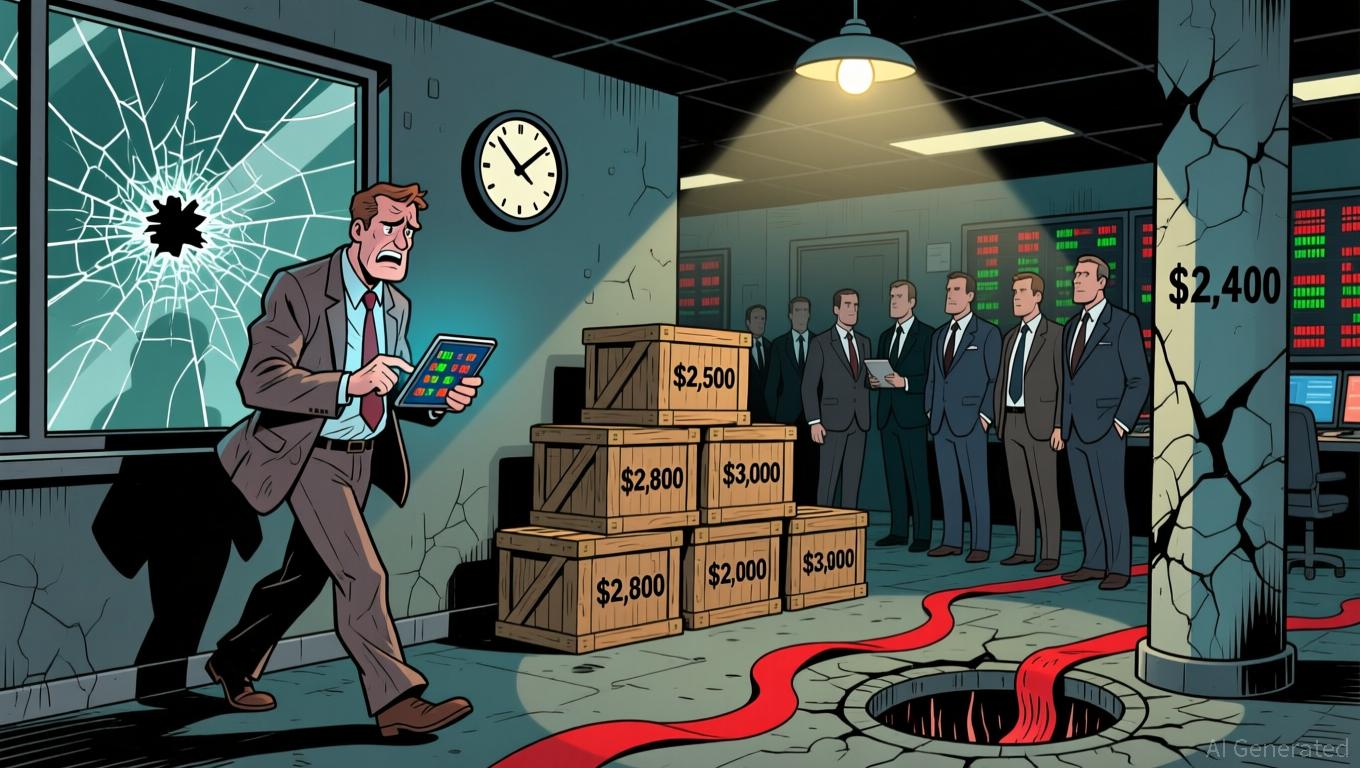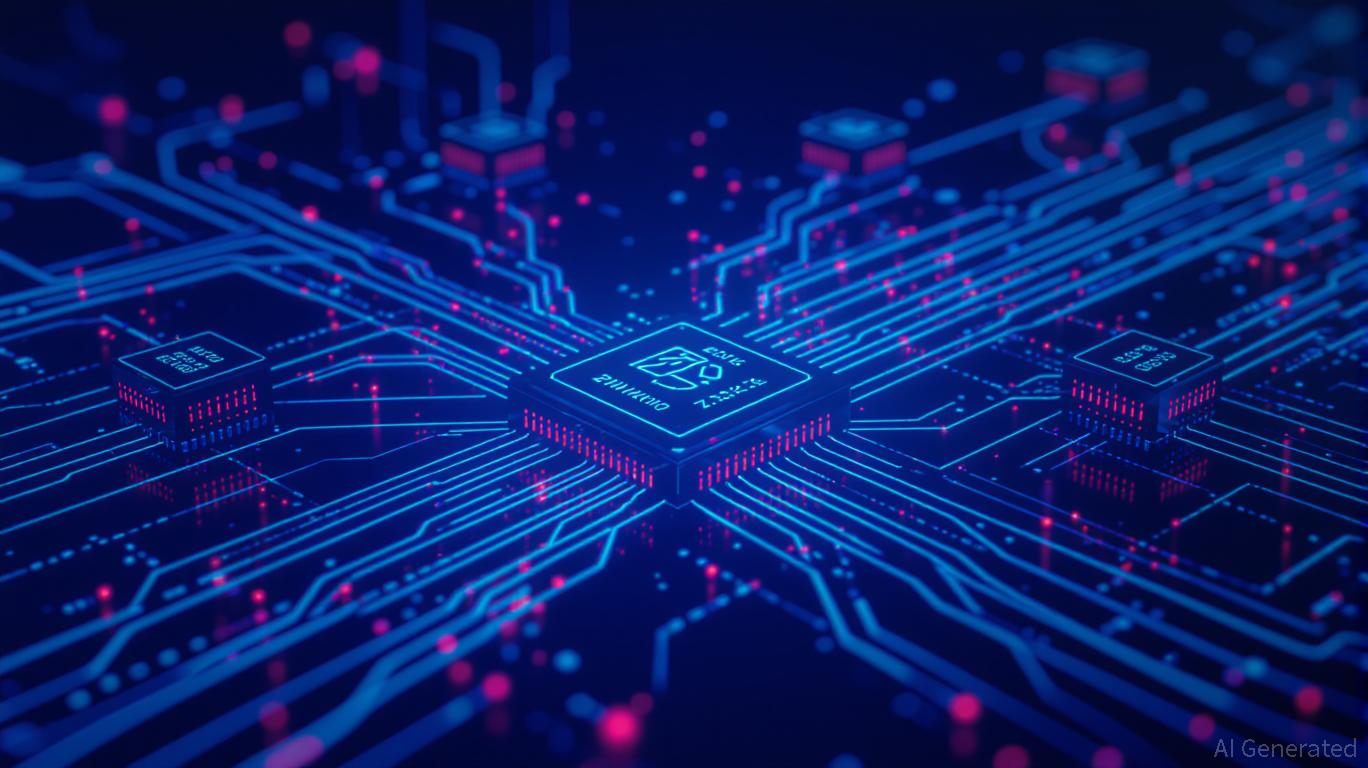Internet Computer’s Latest Rally: Driven by Network Enhancements and Growing Institutional Interest
- Internet Computer (ICP) surged in 2025 due to technical upgrades, institutional partnerships, and speculative trading. - Fission/Stellarator boosted capacity by 50%, while Meridian/Flux aim to enhance cross-chain interoperability and scalability. - Q3 2025 saw $1.14B trading volume but 22.4% DApp engagement drop, highlighting infrastructure-user adoption disconnect. - TVL discrepancies ($237B vs. $1.14B) and reliance on institutional capital raise sustainability concerns amid inflated metrics. - Partners
Internet Computer (ICP) in 2025: Growth, Challenges, and the Road Ahead
In 2025, Internet Computer (ICP) has seen a remarkable surge in value, fueled by significant technical improvements, high-profile institutional collaborations, and a wave of speculative enthusiasm. However, this rapid ascent raises an important question: Is ICP’s momentum built to last, or is it simply the product of short-lived hype? To find answers, it’s essential to examine both the platform’s technological progress and its real-world usage, while also evaluating the reliability of the data supporting its growth story.
Major Technical Advancements: Building for the Future
ICP’s recent upgrades—Fission, Stellarator, and the soon-to-launch Meridian and Flux milestones—have transformed it into a powerful decentralized cloud platform. The Fission and Stellarator updates, rolled out in 2025, boosted the network’s computational power and data throughput by 50%, paving the way for enterprise-level applications. Storage capacity has also grown, with each subnet now supporting up to 2 TiB and the entire network offering 94 TiB across 47 subnets. Notably, ICP stands out for its energy efficiency, consuming only 0.003 Wh per transaction, making it one of the most environmentally friendly blockchains available.
The upcoming Meridian upgrade, expected in October 2025, will bring Dogecoin into ICP’s Chain Fusion framework, enabling smart contracts to hold and transfer DOGE. This move, alongside existing integrations with Bitcoin, Ethereum, and Solana, strengthens ICP’s position as a central hub for cross-chain activity. The Flux milestone is set to further improve network scalability by optimizing load balancing across subnets. These technical strides, combined with ICP’s innovative Active Liquid Democracy governance, have attracted major institutional partners, including Microsoft Azure and Google Cloud.

Adoption in Practice: Mixed Signals
When it comes to real-world usage, the data presents a complex picture. In the third quarter of 2025, daily active addresses on ICP increased by 35%, and decentralized exchange (DEX) trading volumes soared to $843.5 million, up from $532.53 million the week before. On November 10, 2025, daily trading volume reached $1.14 billion—the highest since December 2023. Despite these impressive figures, DApp engagement dropped by 22.4% during the same period, highlighting a disconnect between infrastructure expansion and actual user participation.
Speculative trading activity also exploded, with volumes rising 261% in Q3 2025 as both retail and institutional investors chased the rally. However, the Total Value Locked (TVL) metric reveals inconsistencies: while some reports claim TVL has reached $237 billion, independent sources like DeFiLlama and CoinGecko confirm only $1.14 billion. This gap casts doubt on the accuracy of ICP’s reported metrics and suggests that much of the recent growth may be driven more by speculation than by organic demand.
Institutional Partnerships: Opportunities and Risks
Strategic alliances have played a pivotal role in ICP’s recent expansion. Collaborations with Microsoft Azure and Google Cloud have enhanced the platform’s scalability and appeal to large enterprises. Meanwhile, a prototype developed with the United Nations Development Program demonstrates ICP’s potential for secure, global data infrastructure. The introduction of Chain Fusion and decentralized AI tools like the Caffeine AI toolkit is also drawing interest from organizations seeking hybrid blockchain solutions.
However, this reliance on institutional investment brings its own set of risks. Recent analyses suggest that the surge in TVL and trading volumes is largely driven by tokenized real-world assets and institutional inflows, rather than consistent user engagement. This pattern reflects a broader trend in the crypto sector, where speculative capital often outpaces genuine adoption.
Long-Term Viability: The Need for Real User Value
ICP’s continued success depends on its ability to translate technical innovation into meaningful benefits for users. While the Fission and Stellarator upgrades have positioned ICP as a strong alternative to established cloud services like AWS and Azure, the decline in DApp usage highlights the challenge of turning infrastructure improvements into lasting user engagement. The platform’s energy efficiency and cross-chain capabilities are impressive, but sustained growth will require a thriving developer community and user-friendly applications.
Moreover, questions remain about the reliability of ICP’s reported metrics. If TVL and DEX volumes are overstated, the market could face a correction as these discrepancies come to light. As institutional adoption increases, both regulators and investors are likely to scrutinize these figures more closely.
Conclusion: Cautious Optimism for ICP’s Future
ICP’s recent rally showcases the impact of technological advancement and institutional support. Its upgrades have established a solid foundation for scalability and sustainability, and partnerships with leading cloud providers have enhanced its credibility. However, the platform’s long-term prospects will depend on bridging the gap between infrastructure growth and real user adoption. Addressing the decline in DApp engagement and ensuring transparency in reported metrics will be crucial for ICP to secure its place as a leader in decentralized cloud computing. For now, the market should remain vigilant—celebrating progress while keeping an eye on underlying challenges.
Disclaimer: The content of this article solely reflects the author's opinion and does not represent the platform in any capacity. This article is not intended to serve as a reference for making investment decisions.
You may also like
XRP News Today: Abu Dhabi’s Green Light Establishes UAE as a Pioneer in Stablecoin Development
- Ripple's RLUSD stablecoin gains Abu Dhabi regulatory approval as UAE advances digital finance leadership. - ADGM's "Accepted Fiat-Referenced Token" designation enables institutional use for lending and cross-border payments. - RLUSD's $1.2B market cap growth reflects institutional demand, backed by USD reserves and dual blockchain operations. - UAE's ADGM-DIFC regulatory synergy attracts global fintechs , with Ripple expanding partnerships across Africa and Asia. - Regulatory milestones position RLUSD to
Ethereum Updates: Ethereum Drops to $2,800, Prompting Surge in Demand for ZKP's Hardware-Based Presale
- Ethereum's price fell below $2,800, triggering $6.5M liquidations and testing critical support levels amid declining on-chain demand metrics. - Institutional players like BitMine accumulated 3.62M ETH (~$10.4B) despite the selloff, signaling long-term bullish conviction. - ZKP's hardware-driven presale gained traction with $17M in ready-to-ship Proof Pods and Miami Dolphins partnership for privacy-focused sports analytics. - Mutuum Finance's $19M DeFi presale and ZKP's auction model with $50K wallet caps

Vitalik Buterin Supports ZKsync: What This Means for Layer 2 Scaling
- Vitalik Buterin endorsed ZKsync in late 2025, highlighting its "underrated and valuable" work alongside the Atlas upgrade achieving 15,000 TPS and $0.0001 fees. - ZKsync's zero-knowledge rollups and EVM compatibility enabled institutional adoption by Deutsche Bank , Sony , and Goldman Sachs for cross-chain and enterprise use cases. - The Fusaka upgrade aims to double throughput to 30,000 TPS by December 2025, positioning ZKsync to compete with Polygon zkEVM and StarkNet in Ethereum's Layer 2 landscape. -

The ZK Atlas Enhancement: Revolutionizing Blockchain Scalability?
- ZKsync's 2025 Atlas Upgrade achieves 15,000–43,000 TPS with sub-1-second finality, addressing Ethereum L2 scalability bottlenecks via Airbender proofs and modular OS. - DeFi protocols like Aave and Lido leverage ZKsync's $0.0001/tx costs to unify liquidity, while Deutsche Bank and Sony adopt its trustless cross-chain infrastructure for compliance and transparency. - ZK token surged 150% post-upgrade, with TVL hitting $3.3B and analysts projecting 60.7% CAGR for ZK Layer-2 solutions by 2031 amid instituti
